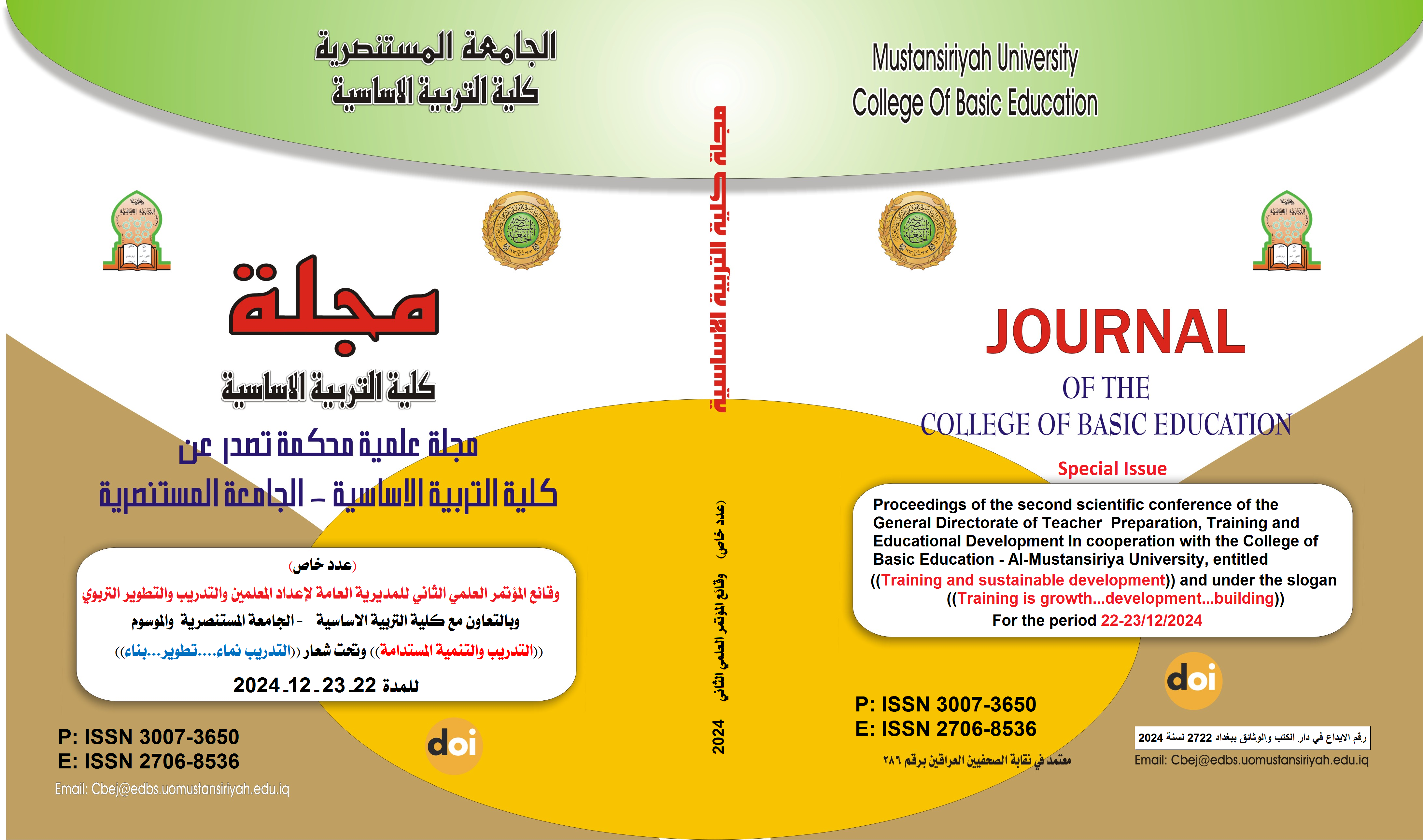Obstacles to mathematics from the perspective of mathematics teachers and their students in the Second Karkh Schools for the Distinguished
Main Article Content
Abstract
The research aims to identify the difficulties facing teaching mathematics from the point of view of teachers and their students from the axes (subject matter, student, teacher, school administration, school environment), and the research limits for the academic year 2023-2024 AD represented all mathematics teachers and their students in the distinguished schools affiliated with the Baghdad Education Directorate/Karkh 2 , The researcher built the research tool, which consisted of the following fields (the subject matter 15 paragraphs, school administration 15 paragraphs, school environment 15 paragraphs, student 15 paragraphs) with a total of (60 paragraphs) from the teachers’ point of view, and also from the fields (the subject matter 15 paragraphs, school administration 15 paragraphs, school environment 15 paragraphs, and subject teacher 15 paragraphs) with a total of (60 paragraphs) from the students’ point of view. After finding its validity, reliability and discriminatory power, it became ready for application to the research sample, which amounted to (24) male and female teachers and (530) male and female students from distinguished schools. After collecting the data, a number of difficulties were identified that received a percentage of (75%) or more, considering them real problems that need to be solved, including: The first rank for difficulties in the content of the mathematics book from the teachers’ point of view was “the intensive academic content with scientific paragraphs” at a rate of (89%), and the first rank for difficulties in the content of the mathematics book from the students’ point of view was “the scientific material presented by the book is difficult for the student to understand on his own,” which received a rate of (90%) of the research sample’s response. The researcher put forward some recommendations and suggestions
Article Details

This work is licensed under a Creative Commons Attribution-ShareAlike 4.0 International License.
